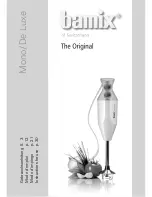
284
03D—Owner’s Manual
Pre fader
—A point in the signal path before a fader. Aux send controls are often con-
figured as pre-fader sends, which means the signal for the aux send is sourced before
the channel fader. The advantage of this is that the aux send signal can be controlled
independently of the main channel signal. Pre-fader aux sends are often used for fold-
back mixes. See also PFL.
Program Change
—A type of MIDI message that is used to recall programs or
patches.
Q
—The unit used to measure an EQ circuit’s selectivity. For high values the frequency
band is narrow. For low values, it is wide.
Quantization
—The PCM process where PAM pulses are approximated to the nearest
binary value available.
S/PDIF format
—See Coaxial format.
Sampling rate
— The number of times per second that an analog audio signal is
sampled (measured) during A/D conversion. The value of each sample is stored as a
data word. Standard sampling rates are 32 kHz, 44.1 kHz, and 48 kHz.
Scene memories
—Memory locations used to store mix scenes. See also Mix scene.
Serial mouse
—A type of computer mouse that connects to a computer’s serial port.
Shelving
—A type of EQ circuit used to cut and boost frequencies above or below a set
frequency. It produces a shelf-looking response curve. High and low EQs are usually of
the shelving type. Contrast with Peaking.
Signal to Noise Ratio (S/N)
—In an audio system, the difference between the oper-
ating signal level and the residual noise floor, usually expressed as a ratio in decibels. It’s
used as a measure of an audio system’s noise performance.
SMPTE timecode
—Pronounced “simpty”, SMPTE timecode is the timecode format
used for television recorders by the SMPTE (Society of Motion Pictures and Television
Engineers) in the United States and the EBU (European Broadcast Union) in Europe.
Snapshot
—See Mix scene.
ST IN
—03D stereo input channel.
ST OUT
—03D stereo output.
System Exclusive
—A type of MIDI message that is used to transmit data between
MIDI devices exclusively. See also Bulk Dump.
THD (Total Harmonic Distortion)
—The amount of distortion introduced by an
audio system, usually expressed as a percentage of the actual signal. Compared to
third-harmonic distortion, which is the measure of a single harmonic, total harmonic
distortion is the sum of the distortions produced at all harmonics.
Unity gain
—A gain of one.
Wordclock
—A clock signal used to synchronize the data processing circuits of all
devices connected in a digital audio system. The wordclock frequency is the same as the
sampling rate. See also Bit clock.
YGDAI (Yamaha General Digital Audio Interface)
—The YGDAI interface sys-
tem allows Yamaha digital audio equipment to be connected directly to modular digital
multitrack recorders, digital workstations, and other digital equipment, using a variety
of industry standard digital audio formats and protocols.
Содержание 03D
Страница 18: ...8 Chapter 1 Welcome to the 03D 03D Owner s Manual ...
Страница 32: ...22 Chapter 2 Touring the 03D 03D Owner s Manual ...
Страница 44: ...34 Chapter 3 Getting Around the User Interface 03D Owner s Manual ...
Страница 66: ...56 Chapter 5 EQ 03D Owner s Manual ...
Страница 80: ...70 Chapter 6 Pan Routing Surround Pan 03D Owner s Manual ...
Страница 98: ...88 Chapter 8 Stereo Output 03D Owner s Manual ...
Страница 106: ...96 Chapter 9 Aux Sends 03D Owner s Manual ...
Страница 120: ...110 Chapter 11 Channel Library View 03D Owner s Manual Aux send view page Bus out view page Stereo output view page ...
Страница 121: ...Groups Pairs 111 03D Owner s Manual Groups Pairs 12 In this chapter Fader Groups 112 Mute Groups 113 Stereo Pairs 114 ...
Страница 126: ...116 Chapter 12 Groups Pairs 03D Owner s Manual ...
Страница 172: ...162 Chapter 14 Dynamics Processors 03D Owner s Manual ...
Страница 240: ...230 Chapter 18 Digital I O 03D Owner s Manual ...
Страница 290: ...280 03D Owner s Manual ...
Страница 302: ...YAMAHA CORPORATION P O Box 1 Hamamatsu Japan 97 03 3000 AP Printed in Japan ...









































